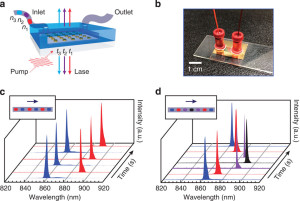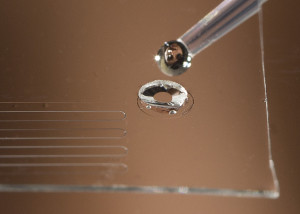![]() A new biosensor technology, commonly referred to as a “lab on a chip,” could monitor your health and alert you of exposure to bacteria, viruses, and pollutants.
A new biosensor technology, commonly referred to as a “lab on a chip,” could monitor your health and alert you of exposure to bacteria, viruses, and pollutants.
“This is really important in the context of personalized medicine or personalized health monitoring,” says Mehdi Javanmard, co-author of the recently published work on the development. “Our technology enables true labs on chips. We’re talking about platforms the size of a USB flash drive or something that can be integrated onto an Apple Watch, for example, or a Fitbit.”
This from Rutgers University:
The technology, which involves electronically barcoding microparticles, giving them a bar code that identifies them, could be used to test for health and disease indicators, bacteria and viruses, along with air and other contaminants, says Javanmard, senior author of the study.
In recent decades, research on biomarkers—indicators of health and disease such as proteins or DNA molecules—has revealed the complex nature of the molecular mechanisms behind human disease. That has heightened the importance of testing bodily fluids for numerous biomarkers simultaneously, the study says.



